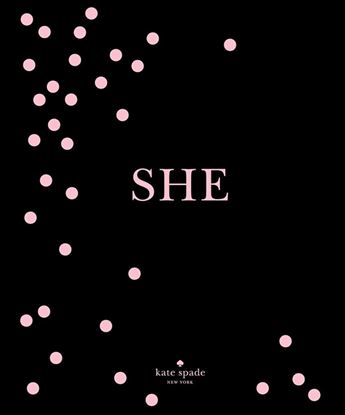

CHRISTIAN SIRIANO
The popular American fashion designer takes us on an exhilarating journey with today’s biggest stars wearing his statement-making designs on the world’s most exciting red carpets.
This highly anticipated sequel to Dresses to Dream About (2017), delves into Siriano’s continued evolution as a visionary, from his groundbreaking fashion that celebrate diversity, inclusion, and body positivity to the meticulous craftsmanship behind each creation. This inspiring tome explores the intersection of fashion, art, and celebrity culture, offering a front-row seat to the dazzling spectacle of Siriano’s bold designs worn by glamorous actors, top models, pop culture legends, LGBTQIA+ icons, and first ladies.
2,995
2,246
KATE SPADE NEW YORK: SHE MUSES
This “must-have tome . . . which pays homage to trailblazers as varied as Gloria Steinem and Dolly Parton” (ELLE) invites readers into a way of living that is singularly joyous, distinctly feminine, and wildly interesting.
The most exciting and vibrant women in America are the ones who stand out from the crowd. SHE pays tribute to:
Revered activists like Gloria Steinem and Shirley Chisholm
Classic fictional characters like Mary Richards and Carrie Bradshaw
Treasured icons like Marilyn Monroe and Nina Simone
Contemporary firebirds like Chimamanda Ngozi Adichie and Dolly Parton
With rich photography, spirited quotes and profiles, amusing anecdotes, words of wisdom, personal essays, and signature kate spade new york “she” statements, every page of SHE will inspire you to live your own interesting life to the fullest, every single day.
2,995
2,246
LIVING WELL BY DESIGN MELISSA PENFOLD
Melissa Penfold, Australia’s foremost authority on style and design, has distilled her three decades of expertise into a single volume, identifying the basic decorating principles—including light and space, composition and balance, and pattern and texture—and offering hundreds of invaluable tips on how to apply them to turn your house into a home that is comfortable, intimate, beautiful, and the most authentic expression of your personal aesthetic.
Illustrated with images of her own home and inspirational homes around the world, Living Well by Design is an indispensable resource for everyone eager to create interiors in which decorating fundamentals are integrally interwoven with individual style.
2,995
2,246











